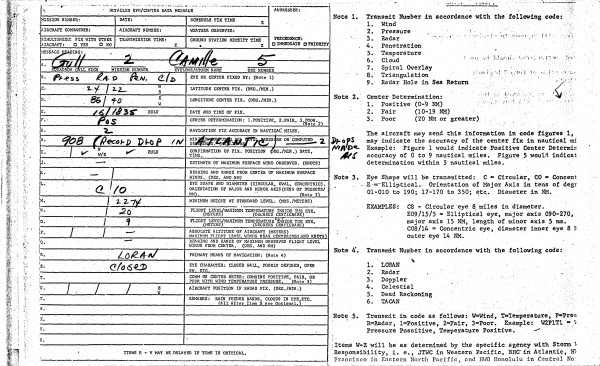A Critical Mission
On this date in 1969, National Hurricane Center Director Bob Simpson knew that he had a big problem. There was a hurricane over the Gulf of Mexico, some 360 miles south of Panama City, Florida. It was moving slowly toward the north northwest on an inevitable collision course with the northern Gulf Coast.
The Weather Bureau’s main computer model, the primitive statistical/dynamic NHC-67, showed that Camille was going to turn north and then northeast and impact the coast near Fort Walton Beach. But in addition to the worrisome track forecast, Simpson was concerned that Camille had grown into a monster hurricane. He just had no idea how strong it was.
The Navy was responsible for flying reconnaissance missions over the Gulf then and most of their planes were tasked to seed Hurricane Debbie in the Atlantic as part of Project Stormfury. The two remaining old planes left in Jacksonville were unable to fly into a strong hurricane. They were sending back radar triangulations of the center from the radar’s on the Connies that they were flying and dropping dropsondes well away from the center. That Saturday morning, the dropsonde released 40 miles from the center recorded a pressure of 996 millibars.
Satellite photos showed that the storm was getting better organized, but the imagery was rudimentary compared to what we have today. Forecasters had estimated that winds had increased to 115 mph. Simpson feared they were much higher.
Simpson asked the Air Weather Service in Illinois to send an Air Force C-130 into the storm that afternoon and they found the central pressure had rapidly dropped to 908 mb, very nearly the record for the western Hemisphere. This is the transcribed report from the plane, written by Dr. Simpson himself.
On the next advisory, the winds were increased to 150 mph. The mission allowed forecasters to highlight the extreme threat that Camille presented to the Gulf Coast.
Camille would go on to devastate the Mississippi Gulf Coast on the evening of August 17th, forever changing the landscape and history of the area.
Category: Met 101/Weather History



















